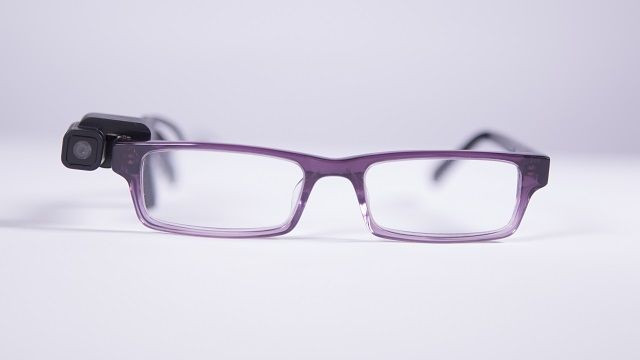Device Helps Legally Blind People Navigate Through Life By Reading For Them

A device designed to help people with poor vision navigate through life seems to have passed its first serious test.
Researchers outfitted 12 legally blind volunteers with the portable device, called the Orcam My Eye, and asked them to undergo a 10-point test involving everyday visual activities, such as reading newsletters, signs and emails. The volunteers scored an average of 2.5 out of 10 without the device, but 9.5 while wearing it. And after using it at home for a week, they performed even better, scoring 9.8 out of 10. The improvements were seen even among volunteers already using other vision aids.
The preliminary findings were presented Monday at the 120th annual meeting of the American Academy of Ophthalmology, held in Chicago.
“While there have been many advances in eye care, the options for assistance in completing daily tasks are limited and cumbersome,” said lead author Dr. Elad Moisseiev, a vitreoretinal surgeon at the Tel Aviv Medical Center in Israel, in a press release. “This represents a new step in the evolution of assistance devices for people with low vision, giving them hope for improving their functionality, independence and quality of life.”
The Orcam My Eye device is the namesake creation of an Israeli start-up founded by Amnon Shashua, a professor of computer science at the Hebrew University of Jerusalem, and current CEO Ziv Aviram.
The device, powered by a portable battery, attaches to the side of a person’s glasses. When users point to something they’d like to read, the device snaps off a photo, scans it, and reads back the text to them. Though it comes equipped with its own visual library, it can store more images and even perform facial recognition. It accomplishes all this thanks to a computer vision algorithm first detailed by Shashua and others in 2011.
“What is remarkable is that the device learns from the user to recognize a new product,” Tomaso Poggio, a computer vision expert at M.I.T. and one-time colleague of Shashua told The New York Times in 2013. “This is more complex than it appears, and, as an expert, I find it really impressive.”
Although the Orcam My Eye device was officially launched in 2015 in the U.S., there have been no reports of independent research of its effectiveness. Neither Moisseiev nor his co-author, Dr. Mark J. Mannis, are connected with the company, they said. At the time of the study, both were researchers at the University of California Davis Eye Center in Sacramento, CA, and while the company loaned the devices out to the department, they were returned by the study’s completion.
Though the study is encouraging, Moisseiev cautioned that it should only be the first of more to come. Later studies should include a much larger group of people with varying levels of visual impairment, he added.
Source: Moisseiev E, Mannis M. A Portable Artificial Vision Device Is a Useful Aid for Patients With Low Vision. 120th annual meeting of the American Academy of Ophthalmology. 2016.



























